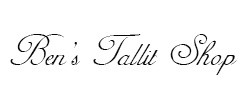Today I got an inquiry from someone by the name of Steve who was ready to tackle techelet tzitzit tying for his first time. But when he started asking questions I could tell he was very unclear about what's inside a set of techelet strings.
i am still unsure about the shamash(s?)
to do the white and blue windings wouldn't there need to be a blue and a white shamash?
I explained to Steve that every set of techelet tzitzit has four white shamash strings. With Chabad tying you don't really need it because there are just two windings of white in total, so even if you used a regular length string it would be long enough.
When possible you're supposed to use the same shamash string, so using the long one helps because when you finish all the windings you know which one you used at the start. If not, i.e. if you use a regular length string as the white shamash, you would make a little knot at the end so help you identify it later.
But Steve still sounded bewildered:
and are there sets sold with both blue and white shamashes specified?
i have understood correctly both a blue and a white shamash are needed, right?
There are basically two types of sets of techelet sets: "Raavad" and "Rambam."
Raavad means you wind up with two blue and six white strings hanging down from each corner. In reality, it's one blue string and three white strings, but when tied it looks like eight.
Rambam means you wind up with one blue and seven white strings hanging down from each corner. How can that be? One of the strings is dyed half blue.
In general Raavad is more common, but among those tying Chabad, Rambam is more common.
Just as a clear example, let's say you buy a Raavad set, open up the package, and lay the strings flat on a table. If you divide the 16 strings in the package into four piles, one for each corner, here's what you'll have in each corner:
- two regular length white strings
- one longer white string
- one longer blue string
So there's nothing to designate. The two long strings are the shamash strings.
 United States Dollar
United States Dollar
 Shekel
Shekel
 Euro
Euro
 British Pound
British Pound
 Australian Dollar
Australian Dollar
 New Zealand Dollar
New Zealand Dollar
 Canadian Dollar
Canadian Dollar
